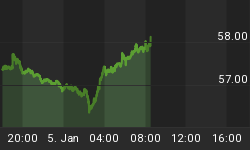Housing starts in November jumped 6.7% after slumping 13.7% in October. So, October marks the bottom of the housing production recession, right? Doubtful. For starters, this past November was warmer than the average of the past ten Novembers. This November, the average temperature was 45 degrees Fahrenheit. For the ten past Novembers, the average temperature was 44.08 degrees. While November was warmer than usual, perhaps prompting a bit more construction-related ground breaking than normal for November, October 2006 was cooler than average, 53.8 degree vs. 54.98 degrees. Perhaps, then, both October's and November's housing starts are overstated in opposite directions. Let's try to separate the signal from the noise by looking at the year-over-year percent change in housing starts. Chart 1 shows that the latest year-over-year reading on housing starts is minus 27.8%, the largest year-over-year decline since March 1991, when the economy was still in a recession.
Chart 1
Aside from the vagaries of the weather, the more fundamental reason why I doubt that housing production is on the upswing is that inventories of already-built new homes are rising relative total new homes for sale. This is shown in Chart 2. Completed homes for sale have jumped up to a to-date cycle-high 29.5% of total new homes for sale. Compared with previous housing recessions, this ratio of completed-to-total still is low. Perhaps one of the largest and most speculative residential real estate booms in the post-WWII era will have one of the shallowest busts.
Chart 2
Perhaps. But in case the ratio of newly-completed homes for sale relative to the total has not reached its cyclical zenith, then history suggests that single-family housing starts have not reached their cyclical nadir. As shown in Chart 3, housing starts tend to trough when newly-completed homes for sale reach a cyclical peak as a percentage of new total new homes for sale.
Chart 3
Sharply higher cancellations of new-home-purchase contracts undoubtedly are leading to the rising inventories of newly-completed homes for sale. This is prompting aggressive price incentives on the part of home builders to "move the merchandise." But with profits evaporating (see Hovnanian's latest loss report released Monday afternoon), will builders plan to build a lot of new homes soon? The permits data suggest not. Again, separating the signal from the noise, Chart 4 shows that the year-over-year trend in building permits still is down. In November, the year-over-year change hit a new cycle low of minus 32.5%. In sum, I think builders are bending over backwards to rid themselves of expensive-to-carry inventory. But once this is accomplished, it will be a warm day in January before they begin to think about rebuilding their inventories of buildings.
Chart 4















